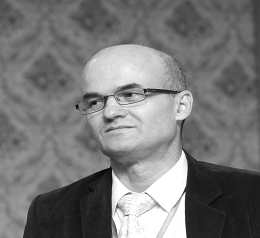Scholars International Conference on
Frontiers in Chemistry and Drug Discovery
THEME: "Frontiers in Drug Discovery, Development and Lead Optimization"
 25-26 Aug 2021
25-26 Aug 2021  ONLINE EVENT
ONLINE EVENT THEME: "Frontiers in Drug Discovery, Development and Lead Optimization"
 25-26 Aug 2021
25-26 Aug 2021  ONLINE EVENT
ONLINE EVENT 
Alexandru Ioan Cuza University of Iasi, Romania
Title: Recent advances in drug design and drug synthesis of azole and azine
Mangalagiu is a professor of organic and medicinal chemistry and Vice-Rector with research at “Alexandru Ioan Cuza” University of Iasi, Romania. Previously, prof. Mangalagiu served as Dean, Vice-Dean, Head of Organic Chemistry Department, etc. at Faculty of Chemistry. He has nearly 30 years of experience in the research, focused in the area of Heterocycles Compounds. He has over 150 papers, 13 patents, 3 international chapter books, etc. He was Visiting Professor and/or invited speaker to prestigious foreign universities (Ludwig Maximilianus University Munchen and Technische Universität Braunschweig, University of Florence, Universite D’Angers), awarded with numerous prizes and honours: DAAD and NATO award, “Costin D. Nenitescu Medal” (Romanian Society of Chemistry), “Al.I.Cuza University Award in Research”, Special Award of Croatian Association of Inventors, etc. Web site: http://teclu.chem.uaic.ro/mangalagiu
Over the last decades azole and azine were reported as valuable scaffolds in medicinal chemistry, showing variously biological activities such as antiviral and anticancer, antiplasmodial and antimalarial, antituberculosis, antifungus, anti-inflammatory, antihypertensive, diuretics, antithrombics, anticoagulants, antidepressant, anxiolytics, anticonvulsant, analgesic, anti-Alzheimer’s, etc. As part of our ongoing research in the field of azole and azine derivatives, we present herein some core results obtained by our group within this area, focused on design, synthesis, and medicinal chemistry applications. The chemistry presented is straight and efficient, and focused in the area diazols, triazols, azine (and bis-azine), diazine (and bis-diazine), phenanthroline and related. Stereo- and regio- chemistry aspects are discussed. The chemistry involve both conventional (thermal heating) and nonconventional (microwave and ultrasounds) methods. Concerning pharmacological potential applications, several classes of azole and azine was designed, synthesized, and tested for their anticancer, antimycobacterial, anti-leishmanial, and other antimicrobials activity. For the most promising compounds, a complete ADMET studies have been performed with very good results.